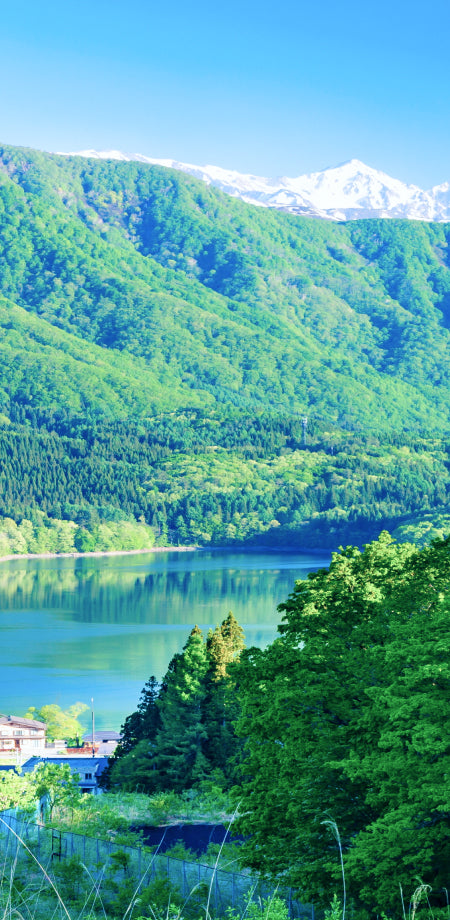投稿日:
更新日:
ShinshuA tour of Kisoji's work that touches on the origins and future of manufacturing

The Nakasendo road was developed as one of the five roads during the Edo period. Along the Kiso River, which flows like a mountain range, crosses a steep mountain pass and passes through a deep valley, there are 11 posts out of 69 Nakasendo inns, and many people traveled there.
And, by taking advantage of the bounty of the rich forest, we have also cultivated a unique culture of work, centered on woodwork. The traditions passed down in this area, which was also recognized as a Japanese Heritage Site last year,ShinshuYou can feel the origins and future of manufacturing.

The glossy "lacquer glass" created by the challenge of lacquer craftsmen
Introducing the traditional "lacquer" into your daily life
Seeing the decline in large furniture as lifestyles change, Yasuto, the second generation, felt a sense of crisis in lacquerware, took on the fusion of glass and lacquer. It was extremely difficult to hold both of them closely together, with no success. Nagano After repeated trial and error with the cooperation of the Prefectural Industrial Technology Center, the lacquer glass "Suitoyo" was finally born in 1994.
"It sold surprisingly well at the exhibition. And above all, I was happy that it was well received by the younger generation," says Yasuto.

And what the third generation Reo and his wife Chie had in mind was to make the lacquer glass that his father had born more fun and more in their daily lives. We have launched a new brand called "Hyakukoshi", with a rich design, and are creating a wide variety of tableware one after another.
"We are currently developing products with European designers and preparing to expand overseas," says Reo. The evolved techniques of Kiso lacquerware are now about to fly into the world.

Representative Directors: Kosaka Yasuto, Reo, and Chie
This lacquerware shop has been selected as a preservation area of important traditional buildings, and has a history of about 70 years in Kiso Hirasawa, a lacquer town. The workshop is run by Yasuto, a traditional craftsman with many awards, and his sons, Reo and Chie.
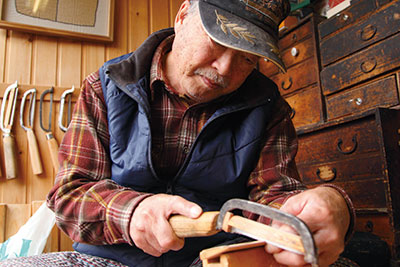
The "Oroku Comb" is a masterpiece from Kisoji, which has been known from the Edo era.
The origin of craftsmanship is the creation of tools without compromise
The Onroku comb is a traditional Kisoji craft that has legendary that the headache of the inn's daughter, Onroku, was cured by a wooden comb with a "Minebari" wooden comb.
Shinohara is a producer of hard, tenacious "minebari" and is a legendary village in Kiso Village, and continues this tradition today.
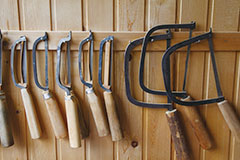

As many as 100 teeth are hand-crafted from a tree that is only about 8cm wide. "Make a comb is difficult to grind straight saw saws, but the most important thing is making the tools. It took me four or five years for my master to say that I had a full-fledged tool," he recalls the past.
The most important tools when making combs are saws for grinding and pulling out the mountains. The two must be the same thickness, and it is said that making these two saws is a stepping stone to becoming a real craftsman.
また、材も天然なので木目もさまざま。 The comb made by Shinohara, who actually went to the mountains to see the trees and studied how to make them easy to comb, is an unmistakable masterpiece by a masterpiece.

Hand-Grinding Roku-Cushi Workshop Shinohara (Kiso Village)
Modern Master Craftsman Shinohara Takeshi
When his father collapsed at the age of 30, he became an apprentice to Kawaguchi Sukeichi, who was recognized as a treasured human prefecture, and was also recognized as a treasured human. 43 years have passed since then, and is one of the few Oroku comb craftsmen who have now gone all the way.

"Namikiso Cat" with a chanko and local kimono with just the back
A kimono full of wisdom and love that is unique to a handmade town "Cat" is a chanchanko that has only been used in Minamigiso Town for a long time, with the back. There are various theories about the origin of the name, such as the fact that it is a hanten, and that it looks like a cat when it is worn and working, but there is a proper reason why this unique clothing was born.
Minamigiso Town is a region where crafts such as hirakasa and rokuro crafts are popular. It warms the cold back and eliminates sleeves that are prone to getting in the way of work and the front part that is prone to getting dirty, making it a rationality for both winter and work clothes.

"When I first saw it when I married Minami Kiso, I was wondering, "What is this?!" (laughs). But when I tried it on, it was warm and easy and I couldn't let it go. I wanted more people to know about it, and started making and selling it," said Chairman Yoshimura. Now, the union is so popular that it sells tens of thousands of copies a year.
Nohara, who served as the vice president of the association and previously worked in sewing, says, "What we used to make in each household was tight and really comfortable to wear. We also incorporate sewing techniques to aim for better things, but the basis for this is the "cat" made by our grandma."

He is actually particular about the shapes that seem ordinary, and has the ingenuity to fit his body. The reason why "cats" are so amazingly warm may be because they are filled with love from their mothers.

Yoshimura Sanae, chairman of the Minamigiso Town Cat Production Association
In 2009, the company established a union centered around local mothers and began producing and selling "Naka Kiso Cat." There are currently 11 members, and some grandmothers who are in their 80s who are vigorously creating cats.

Nohara Noriko, vice-chairman of Minamigiso Town Cat Production Association
Nohara, who is from Gifu, is addicted to the "cat" that her husband's mother received when he got married. Of course, he gave his son's wife something he made himself.
An event to enjoy the winter on KisojiKisoji Ice and Snow Light Festival 1/28 - 2/11
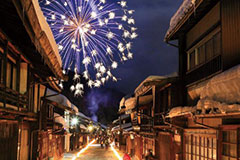 Naraijuku Popsicle Festival
Naraijuku Popsicle Festival
This is a fantastic winter tradition on Kiso Road, with handmade popsicles and snow sculptures, which decorate the post town and the foot of Mt. Kiso Mitake.
1/28 (Sat)
Okuwa Village (around Okuwa Station), Kiso Village Yabuharajuku, Uematsucho (around Hinokinosato Cultural Center), Kiso Town Hiyoshi (around Yoshinakakan, around Harano Station)
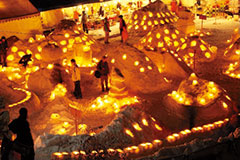 Kiso Fukushima Snow-lit Walk
Kiso Fukushima Snow-lit Walk
2/3 (Fri)
Naraijuku Popsicle Festival (Naraijuku, Shiojiri)
2/3 (Fri) and 4 (Sat)
Kiso Fukushima Snow-lit Walking Road (Fukushima-in-Kiso Town)
2/4 (Sat)
Kaida Kogen Kamakura Festival (Kiso Town Kaida Kogen), Otaki Village (near Tourism Office)
 Kaida Kogen Kamakura Festival
Kaida Kogen Kamakura Festival
2/5 (Sun)
Nigawa Inn, Shiojiri City
2/11 (Sat)
Kurokawa, Kiso Town (near Hometown Experience Hall Kiso Fukushima), Tsumagojuku, Minami Kiso Town, Magomejuku, Nakatsugawa City (near Fujimura Memorial Hall)















